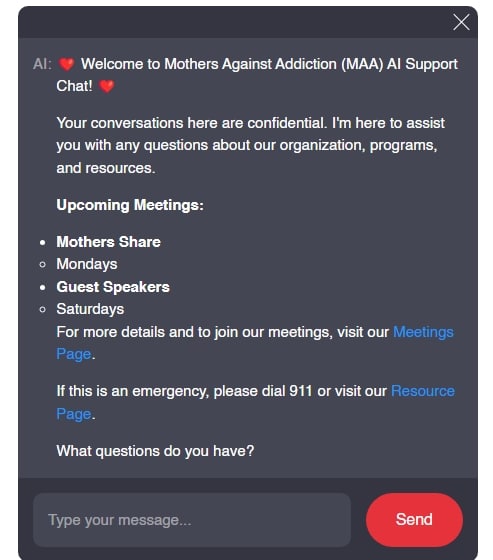Morphine is one of the most recognized medications used in pain management, but what exactly qualifies it as an opioid? This common question—is morphine an opioid?—is crucial for anyone looking to navigate pain relief and the tangles of potential addiction. Morphine belongs to the opioid class of drugs, which includes various substances used both medically and recreationally. In this article, we’ll shed light on what morphine is, how it compares to other opioids, and what parents need to know as we fight against the tides of addiction together.
1. Exploring Opioids: Morphine, Fentanyl, Tramadol, and More
To truly understand the implications of using morphine, one must compare it with other opioids and narcotics. The distinctions matter more than ever for families battling the chaos addiction can create.
1.1 Is Morphine an Opioid?
Absolutely! Morphine is classified as a Schedule II controlled substance and is derived from the opium poppy. It works by binding to the body’s opioid receptors, blocking pain signals to provide effective relief for moderate to severe pain. It’s commonly prescribed for patients recovering post-surgery or those suffering from chronic pain conditions, such as cancer. That said, the path from relief to dependence can be a slippery slope.
1.2 Is Fentanyl an Opioid?
Yes, it is. Fentanyl is a powerful opioid, significantly stronger than morphine, and often employed in treating chronic pain and during anesthesia. While it can provide effective pain relief, its potency raises serious addiction concerns. In recent years, the illicit production of fentanyl has been a dire factor in increasing opioid overdoses—a clear sign we must exercise caution when prescribing and using opioids.
1.3 Is Tramadol an Opioid?
Now, here’s where it gets a bit tricky. Tramadol is often labeled as a weak opioid. While many healthcare providers prescribe it for moderate pain relief, it has its own nuances. So, is tramadol an opioid? Technically, yes, but it works differently. It binds to opioid receptors but also inhibits the reuptake of norepinephrine and serotonin. This gives it distinct properties and potentially lowers its risk of addiction.
1.4 Is Ketamine an Opioid?
Unlike the others mentioned, ketamine is not classified strictly as an opioid. However, its increasing use in treating both pain and depression has put it in the spotlight. It operates differently by blocking NMDA receptors, which can lead to significant pain relief without the same addictive qualities that traditional opioids, like morphine, possess. Understanding this distinction is paramount in addressing the opioid crisis and developing alternative pain management options.

2. The Dangers of Misuse: Understanding Addiction Risks
The opioid epidemic has reached alarming levels, which is why it’s important to discuss the dangers associated with misuse. Cocaine is a highly addictive substance that can cause devastating health complications, including psychosis, heart problems, and neurological damage. When opioids are abused, particularly when mixed with substances like cocaine, the risk of overdose skyrockets.
Understanding individual risks opens the door to discussions about the threats of poly-drug use. Those caught in this web of addiction often require more comprehensive treatment strategies to help them reclaim their lives. Knowledge is power, especially when it comes to preventing the heartache that addiction brings to families.
3. The Path from Prescription to Addiction: What You Must Know
Understanding how one can transition from receiving a legitimate prescription for morphine or another opioid to addiction is vital. It can feel like an unexpected detour that many never anticipated.
By understanding addiction’s complexity, parents can equip themselves with the tools to offer support and empathy as they navigate these tough times with their children.

4. Innovative Alternatives to Opioid Use
Amidst escalating addiction rates, it’s essential to seek innovative alternatives to opioids. One promising approach is integrative methods—things like physical therapy, acupuncture, and even digital therapies that are starting to generate attention.
New studies indicate that cognitive-behavioral techniques can help manage pain without resorting to potentially addictive medications. These alternative strategies empower patients and give parents hope that their children can find relief without falling into addiction’s grasp.
Your Path Forward: Navigating Pain Management Responsibly
Understanding the various classifications of medications such as morphine, fentanyl, tramadol, and ketamine leads to a more informed dialogue regarding their use. Addressing opioid misuse and addiction can pave the way for safer practices and innovative alternatives. It’s time to focus on health and well-being while fostering community discussions around addiction and treatment.
At Mothers Against Addiction, we’re here to walk alongside parents. We know this path is fraught with challenges, but together, we can forge a community that prioritizes our loved ones’ futures. The journey may be hard, but every step you take strengthens the fight against addiction.
Together, with compassion and resilience, we can transform our struggles into hope for healthier futures for ourselves and our children. Let’s stay informed, vigilant, and supportive—because every moment counts in this fight.
We’re standing with you. Your story matters, and you’re never alone in this journey. Join us in our mission against addiction and help create a brighter tomorrow.
For more guidance and resources, visit us at Mothers Against Addiction.
Is Morphine an Opioid?
Morphine is indeed classified as an opioid, which might come as a surprise to some! It’s a powerful drug that’s been used for centuries to relieve pain, particularly after surgeries or serious injuries. But did you know that opiates like morphine are derived from the opium poppy? This fascinating plant has been a key player in the history of medicine, used well before modern pharmacology took off. In fact, many people discover their own journeys with substances due to the troubling effects of alcohol and addiction. Understanding issues like alcohol abuse disorder can help paint a broader picture of substance use in our society.
Interestingly, not all opioids are created equal. Many people think of morphine when dealing with pain management, but there are several alternatives available today. In the same vein, different artists and entertainers have their own ways of expressing struggles, like Bebe Rexha in her heartfelt songs. Her journey emphasizes the raw reality of battling addiction, much like how some find themselves grappling with dependency on medications. It’s critical for caregivers and family members to stay informed and support their loved ones, especially when behaviors can mimic those seen in Sociopaths.
In modern medicine, the conversation around opioids continues to grow. People often seek help or new opportunities following an addiction battle, leading to initiatives like small business Grants For Women, which empower those affected to reinvent their lives. It’s heartwarming to see resources and support structures expanding, making it easier for individuals to find their footing. So, while you’re pondering over is morphine an opioid and its implications, remind yourself of the abundant resources out there and the advancements being made in addiction recovery efforts.
On a lighter note, morphine’s ties to pop culture even extend to fun festivities, like the cherished “Elf” movie featuring Will Ferrell. Just like Ferrell’s character trying to find his place in the world, figuring out the weight of medications like morphine can feel overwhelming, yet it’s vital for those in pain or dealing with addiction. By discussing these topics openly, communities can better support individuals in navigating recovery journeys, understanding their options, and living healthier lives.





























